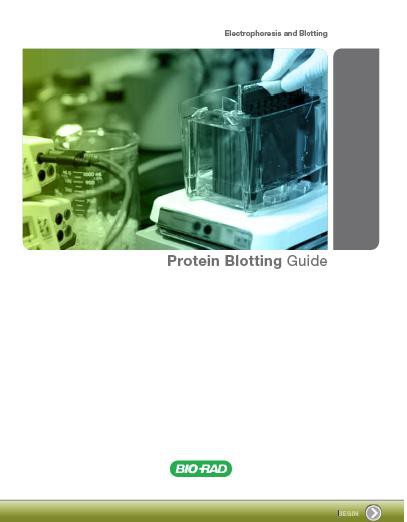A methods article published yesterday provides a rigorous and concise workflow with specific instructions on how to produce and analyze quantitative data using western blot experiments. The paper, coauthored by Bio-Rad scientists and published in BioMed Research International, also highlights recently introduced technologies that improve reproducibility. The result is a powerful, step-by-step guide to obtaining quantitative and reproducible densitometric data from western blots regardless of the specific experiment.
Although western blotting is a well-established laboratory technique, it has recently come under fire as a quantitative method because extreme care must be taken when generating and interpreting the resulting data.
The technique is challenging and requires following a rigorous methodology to achieve reproducible and quantitative data. According to a recent survey of more than 750 labs, 41% of researchers say their western blots fail a quarter of the time.
Dr. Aldrin Gomes, an assistant professor at University of California, Davis, agrees that flawed western blots are not unusual. To compare expression of a protein of interest from sample to sample, protein abundance is commonly normalized to a housekeeping gene. “When I see a large, dense band for the protein of interest or the housekeeping protein, I cringe,” says Gomes. That dense band usually means the protein of interest or housekeeping protein was no longer within the assay’s linear dynamic range. No accurate quantitative data can be extracted from such blots.
Sean Taylor discusses the BioMed Research International paper he coauthored.
Another common reason for failure of quantitative western blots is flawed or incomplete protocols, according to Sean Taylor, the paper’s lead author and a Bio-Rad field application scientist (watch a video of him discussing the paper on the left). To address this, Taylor’s review pays special attention to experimental design and sample preparation and discusses proper definition of the linear dynamic range of protein loading, all key factors for generating meaningful quantitative western blot data.
Taylor also introduces more advanced concepts to improve reproducibility, simplify workflow, and reduce the time and cost of western blotting. One such technique is stain-free total protein normalization, which over the past year has proven superior to using housekeeping proteins or total protein staining to correct for loading errors.
With this article, Taylor hopes researchers now have a simple guide to ensure quantitative and reproducible western blot data for all research fields that rely on this technique.
To read the open access research article, visit http://bit.ly/1kCAOcr.
For additional resources please consult Bio-Rad’s guide to Troubleshooting Western Blots.















